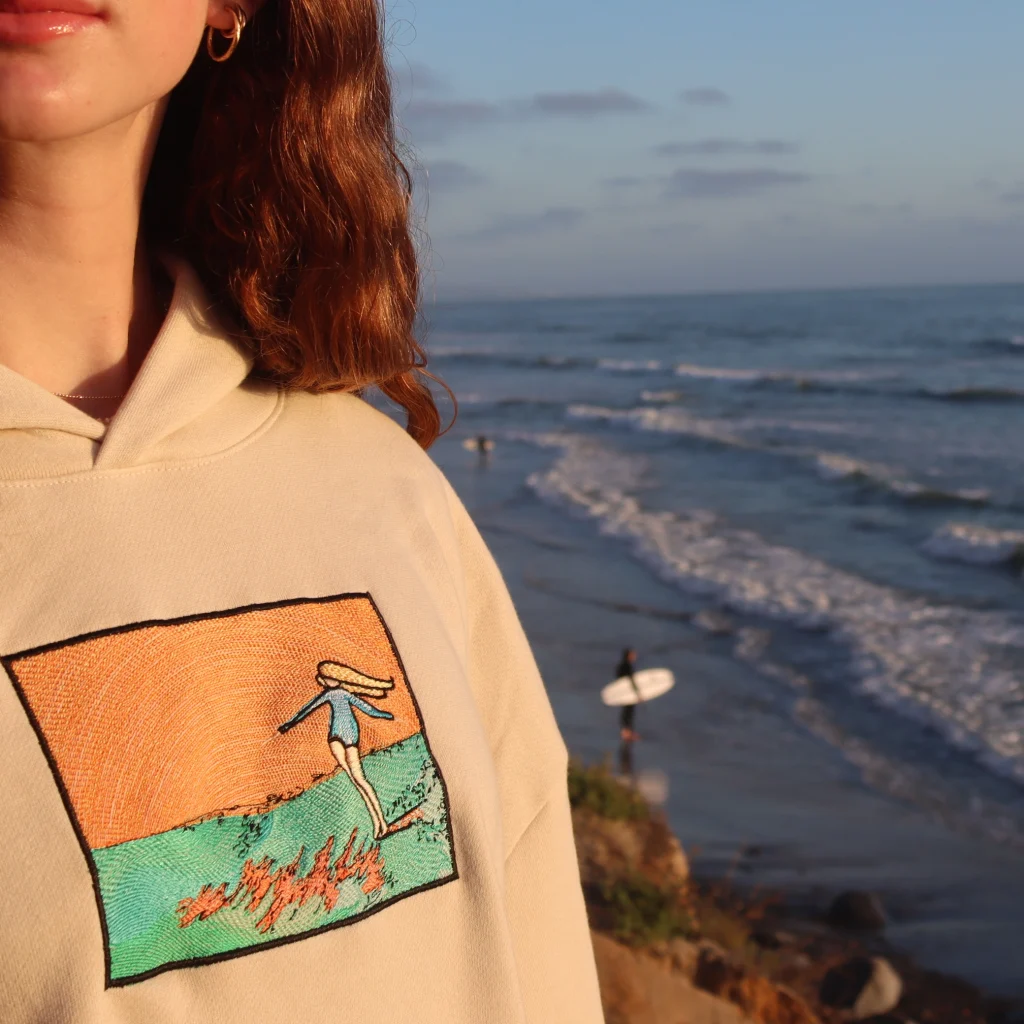In the ever-evolving world of fashion, creativity knows no bounds. From intricate patterns to bold statements, every detail counts in making a lasting impression. Among the myriad techniques at a designer’s disposal, decorative stitching stands out as a quintessential tool for elevating fashion to new heights.

In this post, we’ll delve into the artistry of decorative stitching, with a special focus on the transformative power of line fills. These subtle yet impactful techniques not only add texture and depth to garments but also serve as a canvas for translating intricate artwork into stunning embroideries.
In an industry where innovation and uniqueness reign supreme, mastering decorative stitching is more than just a skill—it’s a necessity. Join us as we explore how fashion brands can harness the beauty of line fills to captivate audiences and leave an indelible mark on the runway and beyond.
Line Fills: A Creative Technique To Bring Your Artwork To Life
In commercial embroidery, a line fill is a technique used to fill in areas of an embroidery design with closely spaced parallel lines of stitching. These lines typically follow the shape of the area being filled, creating a solid or textured appearance. Depending on the density of the stitching, the substrate (the material being embroidered) maybe visible or not.
Line fills are commonly used to add depth, dimension, and visual interest to embroidery designs, especially when replicating intricate artwork. By adjusting factors such as stitch direction, density, and spacing, embroiderers can achieve different effects, from smooth and uniform fills to textured or patterned surfaces.
Overall, line fills are a versatile and effective way to transform detailed artwork into embroidered designs, allowing for precise reproduction and customization while maintaining the integrity of the original image.
Introduce line fills as a specific decorative stitching technique. Explain how they work and why they’re valuable for turning detailed artwork into embroidery. You could include examples of different types of line fills and their effects.



3 Quick Tips for Getting Good Results With Line Fills
If you’d like to jump into using line fills on your artwork, I’m sure you also want to get a great result for your first sample, we’ve put together this quick checklist to help you on your way.
- Optimize Artwork for Embroidery: Before converting your artwork into embroidery, simplify complex details and ensure that lines are clear and well-defined. Remember that fine details may not translate well to embroidery, so focus on creating bold, distinct lines that can be easily replicated with stitching. If you fail to simplify the details, someone else will have to do it for you and you are giving up a considerable amount of creative direction.
- Consider Scale and Proportion: Keep in mind the scale and proportion of your design when incorporating line fills. Adjust the density and spacing of the lines to suit the size of the embroidery area and the overall dimensions of the garment or accessory. Experiment with different line weights and spacings to achieve the desired visual impact. This means that it make take a sample or two for you to achieve the exact result you are looking for. Don’t hesitate to request a mock up of a digital stitch out prior to approving your embroidery artwork and don’t give up easily, remember sampling is a process.
- Think About Texture and Dimension: Line fills offer a great opportunity to add texture and dimension to your designs. Experiment with different stitch directions, densities, and patterns to create depth and visual interest. Consider how the texture of the line fills will interact with the fabric and how it will enhance the overall look and feel of the finished piece.
Line Stitches Are A Great Opportunity to Differentiate your brand
If you are an artist or brand owner that is looking to create different apparel products, or to build a deeper connection with your audience through premium apparel products, I think using decorative stitch types, like line fills can help set your embroidered products apart from the pack.
Personally, I’ve had a ton of fun working on this project, as I’ve gotten to celebrate a few personal interests of mine in a single project! It’s not everyday that you can have this much fun at work, and I feel confident that you can have just as much fun creating amazing products for your brand and using them to celebrate the things you love most.
Best of luck creating!



